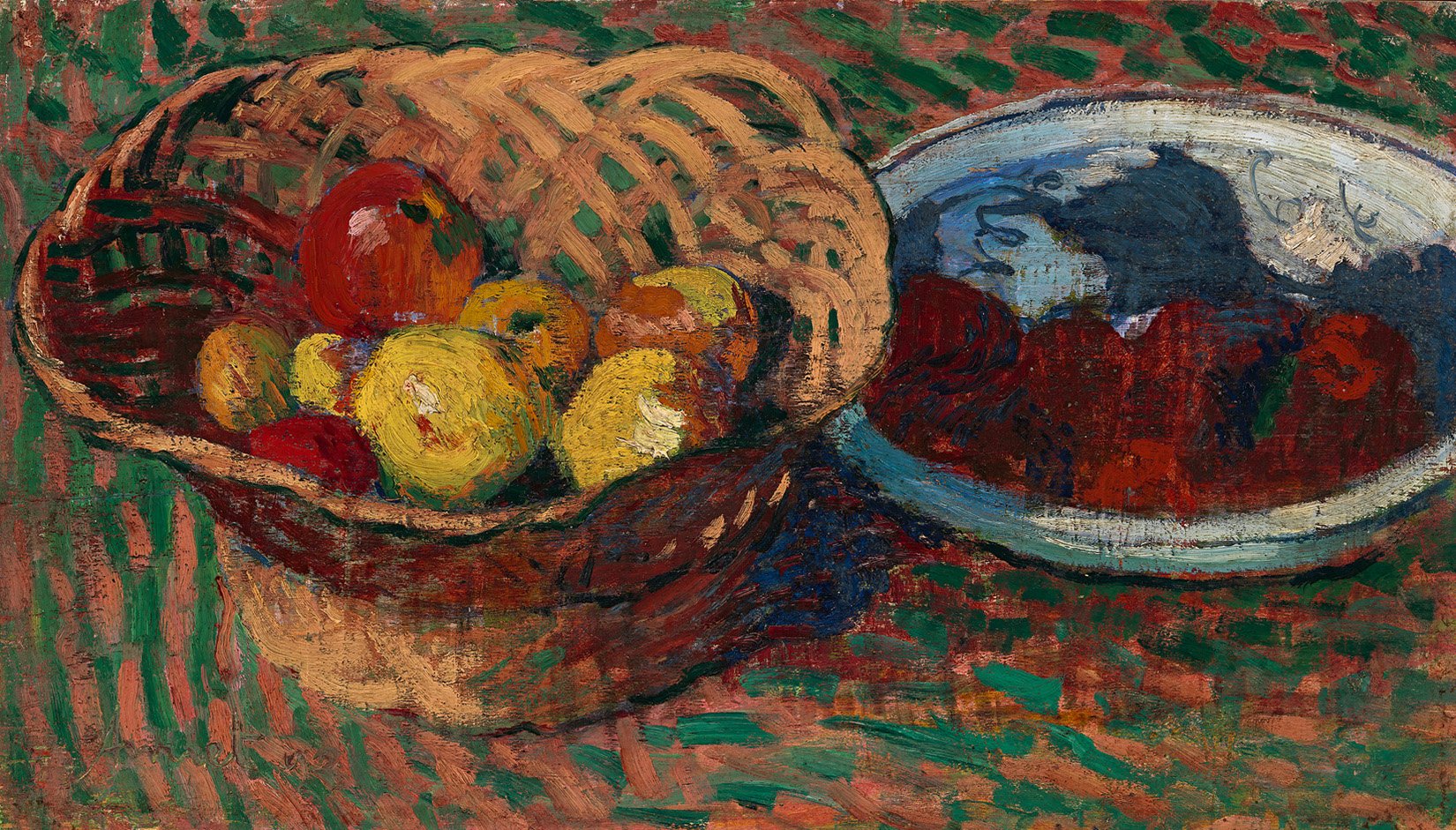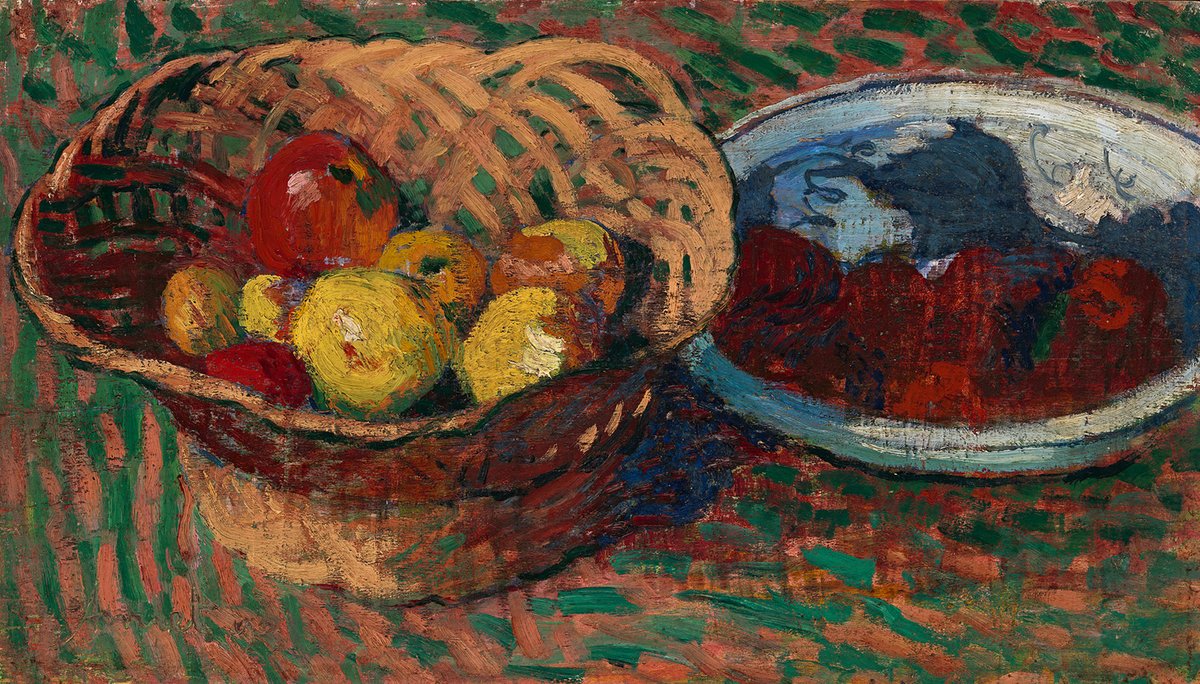Cuno Amiet
Still life with Apples and Tomatoes

Cuno Amiet
Still life with Apples and Tomatoes, 1892
Kunst Museum Winterthur, Stiftung Oskar Reinhart, Ankauf, 1953
Foto: SIK-ISEA, Zürich (Philipp Hitz)
Cuno Amiet was one of the great innovators of Swiss painting around 1900. Influenced by contemporary French art, he broke away from the tradition of the nineteenth century and overcame the dominant influence of Ferdinand Hodler. He and his friend Giovanni Giacometti, the father of famous sculptor Alberto Giacometti, created a lively style of painting in colours, a kind of Swiss-style Fauvism. In the course of an unusually long creative period, his work went through various phases of development, with colour always remaining the defining constant.
After sporadic lessons with Frank Buchser and attending the Munich Academy, he moved to Paris with his friend Giacometti in 1888, where the two came into contact with the avant-garde. While Giacometti had to return to Switzerland after two years for financial reasons, Amiet moved on to Pont-Aven in Brittany. This was where Paul Gauguin worked and attracted numerous young artists who followed this modernist path. By then Gauguin was already in Tahiti, but his influence was still strong. It was here that Amiet achieved the decisive breakthrough in his artistic development. By studying Gauguin, but also van Gogh, whom he also discovered here, he managed to put tonal painting behind him and found his way to a luminous colourfulness.

Cuno Amiet
Still life with Apples and Tomatoes, 1892
Kunst Museum Winterthur, Stiftung Oskar Reinhart, Ankauf, 1953
Foto: SIK-ISEA, Zürich (Philipp Hitz)
Still Life with Apples and Tomatoes, painted in Pont-Aven in 1892, incorporates these new impressions. The tightly framed, horizonless picture detail, the view emphasized from the top and the cropping of the object are typical compositional devices of Amiet's idols who, in turn, were inspired by Japanese woodcuts. The rhythmic and high-contrast combination of strawberry-red and lush green strokes, the dynamic brushwork and the partially impasto application of paint are clearly inspired by van Gogh's art, while the contour lines of the bowl and basket are reminiscent of Gauguin's Cloisonnism. Together, they create a symbiosis of avant-garde painting with which Amiet led Swiss art into a new era.


